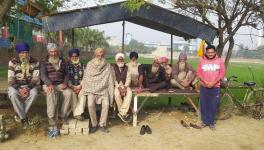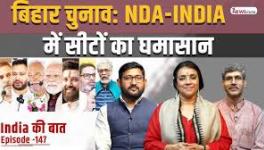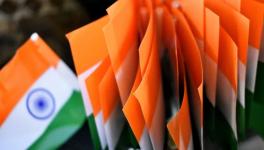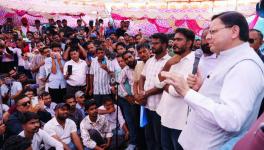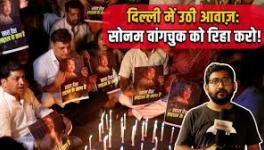Punjab has a Drug Problem but Governments Ignore Source of Menace
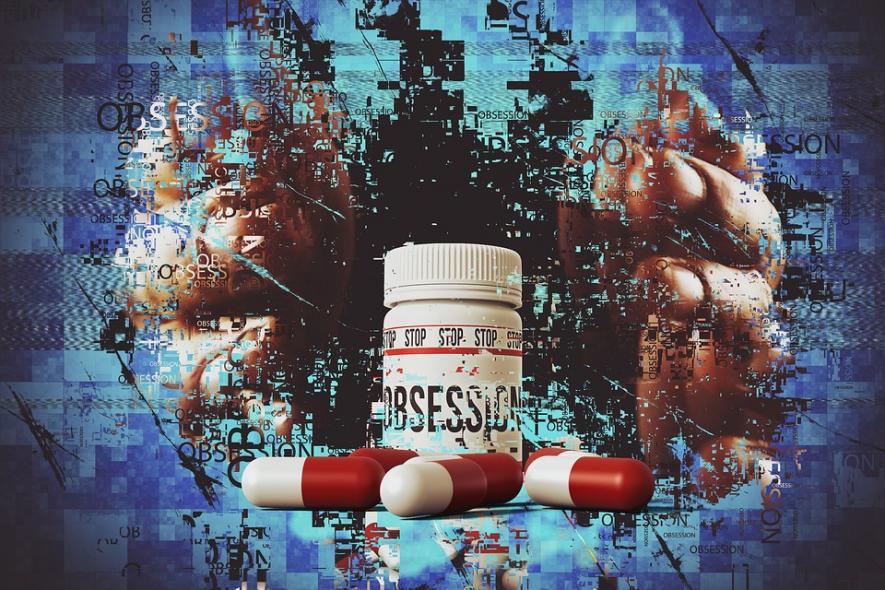
Image Courtesy: MaxPixel
On 17 July, the Union Home Minister laid the foundation of the building for the Narcotic Control Bureau, as if the agency was not present and functioning in Punjab. It is just a new building and the NCB has always been there. However, the foundation-laying event might have been the first time Punjabis heard of it.
The impression one gets is that the incumbent government has failed to control the drug menace prevalent in the state owing to which the central agency has had to intervene. Moreover, the people in the state have heard numerous discourses about efforts to control it, to the extent that in 2017 one chief ministerial candidate swore by the Sikh holy book to end the problem within no time. However, after becoming the chief minister, he did too little to have any effect.
In the last ten years, some politicians in power, officers in government, and police officers have been blamed for their involvement in drug trafficking, but to no avail. Going by the items included in the category of drugs (along with synthetic drugs), most public discourses on the issue in Punjab are devoid of the history of drug use in the region.
In 1846, Lt. Col. Henry Steinbach, an officer in Maharaja Ranjit Singh’s army, wrote a book on Punjab with a special focus on the Sikhs. He observed that the consumption of alcohol, opium and cannabis (bhang) was common in Punjab. Opium was freely available during the colonial era. In addition to opium, the consumption of poppy husk, earlier called ‘post’ and later rechristened ‘bhukki’ was also consumed.
Until the 1970s, the consumption of alcohol rose in Punjab as prosperity grew after the green revolution. Alcoholism turned out to be a major social problem and there was a rise in related deaths in rural Punjab. Opium consumption continued simultaneously, particularly in southern Punjab bordering Rajasthan. An Akali leader engaged in smuggling opium, and opium was named in his ‘honour’. An opium or poppy husk addict is called ‘amali’ in Punjab and regarded as an indispensable character in the cultural landscape of Punjab.
Cannabis consumption also occurs in various forms. It is smoked, eaten, and drunk. It is also regarded as sacred on certain religious occasions, like Holi. A religious sect among the Sikhs, the Nihang Sampradai, uses it and calls it ‘sukha’.
In the 1990s, synthetic drugs made their way into Punjab in a big way—a consequence of rising prosperity. Punjab is not a wealthy state like Maharashtra or Gujarat. But even though the state’s governments have been in perpetually financial crisis for thirty years, most of its people can be categorised as middle-class. Their prosperity is not only a result of their hard work but international migrations and remittances.
The circumstances of an average Punjabi makes them vulnerable to drug use owing to two factors: firstly, the tradition of consumption of alcohol and other drugs and secondly, their economic position makes it possible to buy expensive drugs. Only better-off people can afford synthetic drugs like LSD, heroin and cocaine because of their high cost.
Serious problems with drug abuse began to surface at the beginning of the present century when drug consumption started rising alarmingly among the youth. A study conducted by sociologist RS Sandhu showed that 70% of drug users were young people. It was an alarming revelation in the sense that in the coming years, more and more young people were likely to become drug addicts.
The number of drug addicts was still low, but Punjab earned a bad name in the second decade of the century, largely because it became a political issue.
A little bit of the history of drug trafficking will be enlightening at this stage. Most people know that synthetic drugs, particularly heroin, are smuggled into India through the Indo-Pak border and originate in Afghanistan. Cross-border smuggling has gone on for the last seven decades. It involved various prohibited items, such as gold, liquor, opium, etc.
From the 1970s onwards, Punjab became the major source of liquor for Pakistan, and was smuggled across the border in an organised manner. And opium and gold were smuggled into India. Most villagers along the border in the Amritsar district were invariably engaged in smuggling.
When the terrorist movement started in Punjab and the Soviet Union withdrew from Afghanistan, the smuggling of arms from Pakistan to Punjab began rising. Sikh militants were among the major beneficiaries of this, but the smuggling expanded beyond terrorists. When the international border was fenced, it was expected that militancy would be controlled. In a way, it proved effective in controlling the smuggling of weapons, but militancy was suppressed when some other forces also influenced its course.
Narcotic smuggling, however, continued even after militancy had ended, Punjab being one of the routes for international trafficking. After 1992, as other routes of smuggling became more effective, Punjab turned into a destination for drugs instead of a through passage. We hear news of various ports and ships containing drugs discovered in their cargo. Gujarat and Maharashtra are facing a serious issue in this respect.
That said, the cross-border smuggling of drugs and arms has continued even in Punjab. At present, drugs are smuggled into the state through drones, but it seems to camouflage the smuggling through other means—such as by bribing personnel engaged in checking cargos!
When we discuss drug-related issues, it always means synthetic drugs, which in Punjab is called “medical Nasha”. The reason is alcohol consumption, which has become widespread among both genders, though people still die of spurious alcohol clandestinely sold in many places at cheaper rates. The Punjab government’s recent excise policy has reduced the rates of ‘English spirits’, as a result of which the spurious liquor has lost its market among the lower classes.
The politics of drugs began during the 2012 Assembly election, when Congress leader Rahul Gandhi spoke about it, though he mistakenly stated that 70% of [Punjab’s] youth is addicted to drugs. The source of his data was Sandhu’s work, but Gandhi should have said that among drug addicts, 70% are youth. In any case, he initiated a public debate on drug abuse in Punjab. When the Congress failed to win the 2012 election, it continued to speak about the issue to the extent that in 2017 its chief ministerial candidate, Capt. Amarinder Singh, swore by the Sikh holy book that he would end the drug menace.
Now, rumours about the involvement of certain political leaders in drug smuggling began to circulate in Punjab. The first breakthrough came when a police officer, sacked DSP Jagdish Singh Bhola, was arrested in a drug racket amounting to Rs 700 crore and convicted in 2013. It is said that he named Akali leader Bikram Singh Majithia, who was then interrogated by the Enforcement Directorate. However, nothing could be proved.
Capt. Amarinder Singh did nothing to end the drug menace in Punjab, but when Charanjit Singh Channi became the chief minister for six months, he got Bikram Singh Majithia arrested, who, after some months was released on bail.
With the Aam Aadmi Party (AAP) coming to power in 2022 under Chief Minister Bhagwant Mann, the seriousness to end the drug problem was indeed visible. Many drug peddlers are being arrested in Punjab, but a breakthrough was achieved when inspector Inderjit Singh was arrested and an IPS officer, Raj Jit Singh Hundal, was dismissed from service over involvement in drug trafficking. Jit Singh Hundal is absconding, but will surely be arrested and jailed sooner or later.
Many experts believe that all of this is just the tip of the iceberg, as both drug smuggling and drug use are going on unabated. It is an international racket under which the menace has spread across the country. In some cases, people have become active in preventing drug peddling in their villages. However, there is still news of deaths due to overdoses or murders by addicts seeking money (usually from near and dear ones) to purchase drugs.
Some pockets have become notorious for drug-related issues. For example, Havelian village in the Tarn Taran district is notorious for drug smuggling. Similarly, Sharifpura, a locality in Amritsar, is known for drug addicts, whose problem could not be solved despite attempts by voluntary organisations.
Is it possible to end the drug problem? The answer is largely negative. Some countries, such as Columbia and Mexico, and many others, are waging war against the drug mafia, but the problem persists. One major reason is that drug manufacturing and smuggling is an economy involving billions of dollars, and the number of people involved in its production and supply is too large.
It would be naïve for the present government to claim that it would control the problem. The use of drug money in elections and other activities is a known fact, but there has been no serious attempt to hit the source of drugs. The state must develop sufficient infrastructure as rehabilitation of addicts remains the most important aspect of waging the war on drugs.
The author was a professor of sociology at Guru Nanak Dev University, Amritsar, and former president of the Indian Sociological Society. The views are personal.
Get the latest reports & analysis with people's perspective on Protests, movements & deep analytical videos, discussions of the current affairs in your Telegram app. Subscribe to NewsClick's Telegram channel & get Real-Time updates on stories, as they get published on our website.









